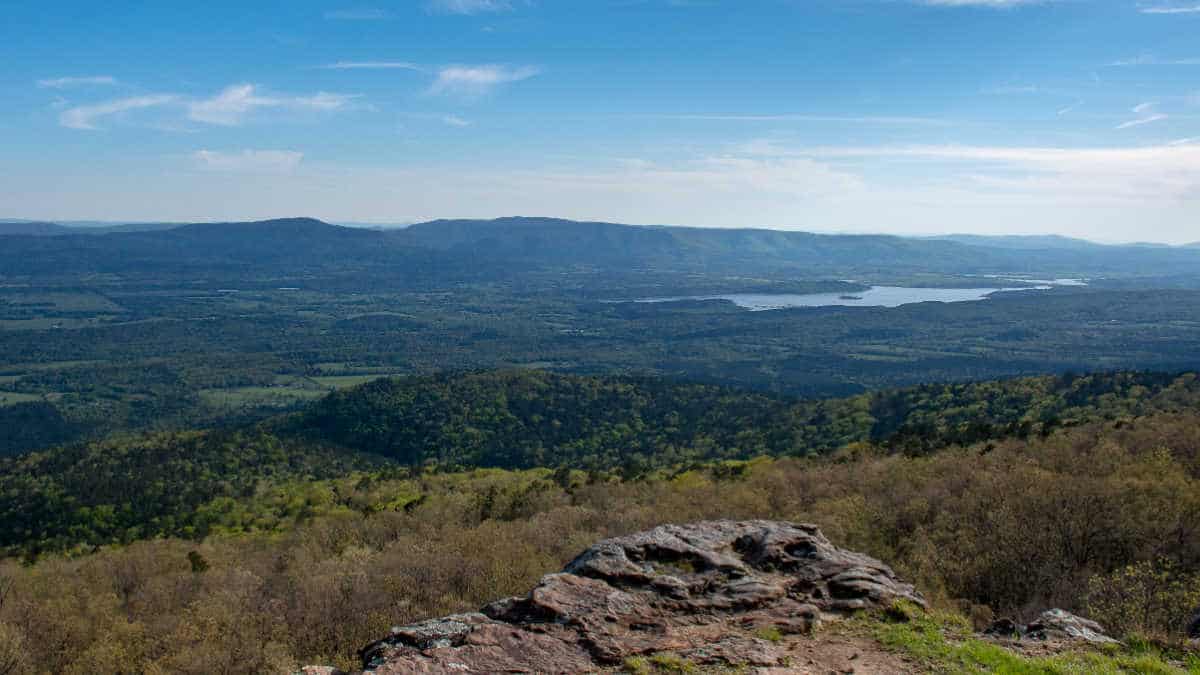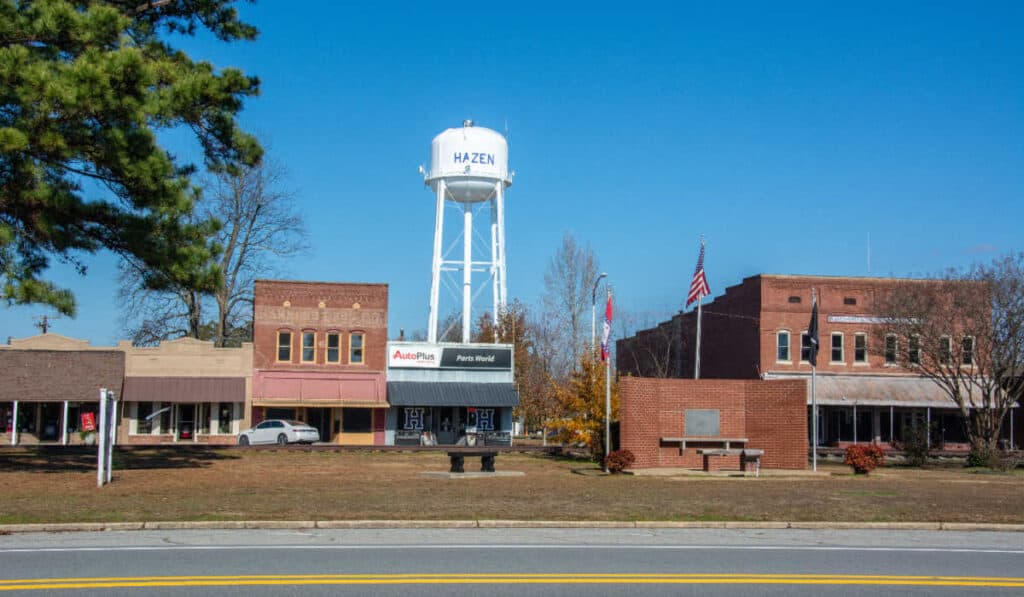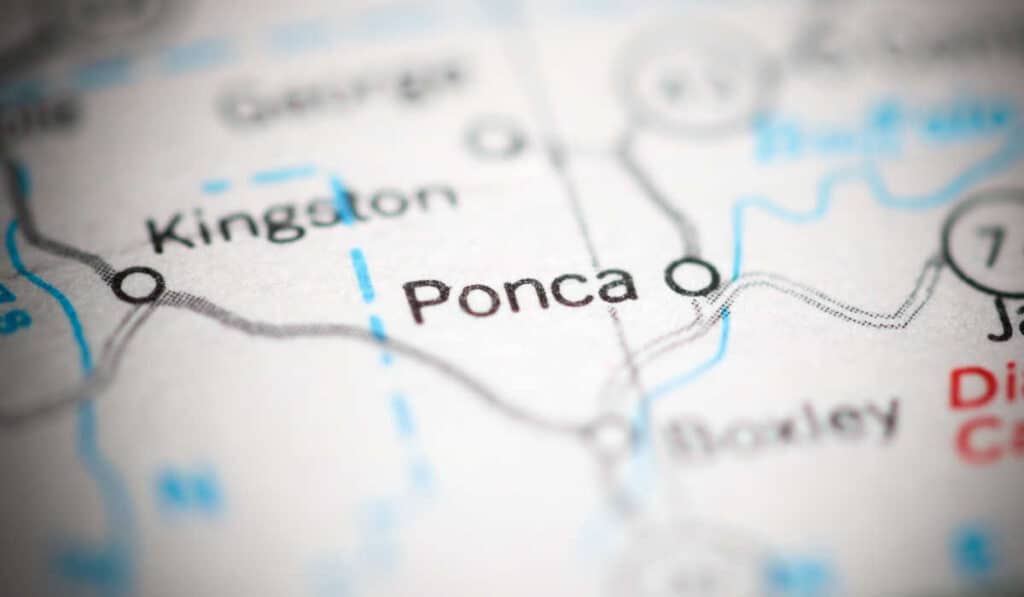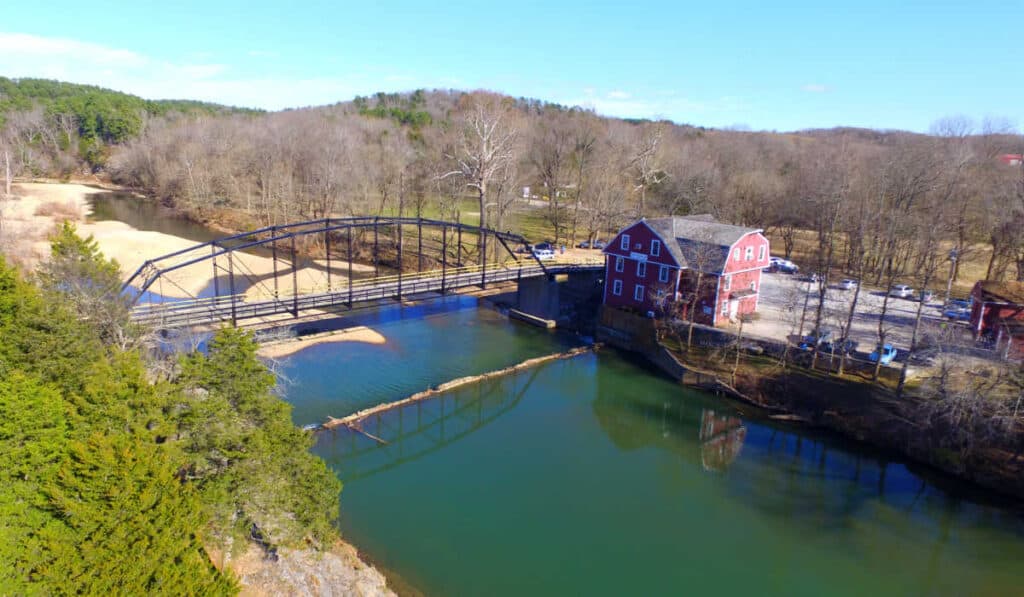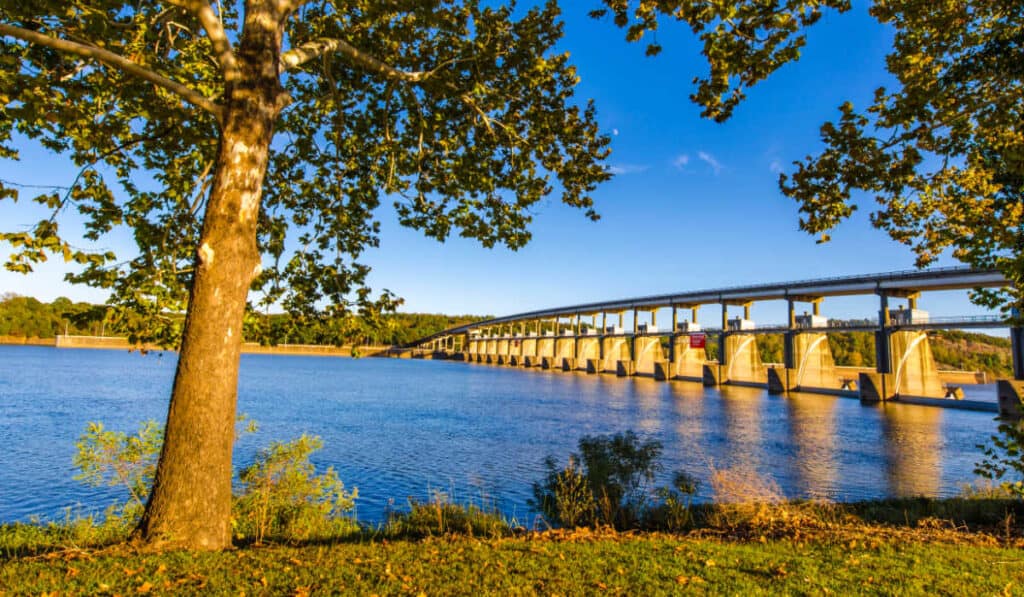The Ozarks, a fascinating and picturesque region in the United States, has drawn the attention of tourists and nature enthusiasts alike. This physiographic area, which is also known as the Ozark Mountains, Ozark Highlands, or Ozark Plateau, spans multiple states and boasts lush forests, plentiful waterways, and remarkable geological features. Understanding the scope of this expansive range, which states it occupies, and its distinguishing characteristics are essential for those interested in discovering the Ozarks’ beauty.
Primarily, the Ozarks cover significant parts of Missouri, Arkansas, and Oklahoma, even extending into the extreme southeastern corner of Kansas. This highland region, characterized by its stunning natural scenery and adventure opportunities, stretches southwestward from St. Louis, Missouri, all the way to the Arkansas River. With this vast landscape, visitors and locals alike have the chance to explore the various geologic categories of the Ozarks, such as the Springfield Plateau and the Boston Mountains.
Geographical Location of the Ozarks
The Ozarks, also known as the Ozark Mountains, Ozark Highlands, or Ozark Plateau, is a physiographic region situated in the central-southern United States. It spans across multiple states, including Arkansas, Missouri, Oklahoma, and Kansas. The highland region primarily occupies the southeastern corner of Kansas and northeast Oklahoma, with the largest portions located in northern Arkansas and southern Missouri.
Arkansas
Arkansas encompasses a significant part of the Ozarks. The region in this state covers approximately 13,000 square miles. With its lush forests, fast-flowing rivers, and abundance of natural beauty, the Ozark Mountains are a popular destination for outdoor enthusiasts in Arkansas. Some notable destinations in Arkansas’s Ozarks include the Ozark National Forest and the Buffalo National River.
Missouri
Southern Missouri contains the majority of the Ozarks, with 33,000 square miles of the highland region situated in this state. The Ozark Mountains in Missouri offer a diverse landscape, ranging from rolling hills and dense forests to rivers and lakes. Some popular attractions in Missouri’s Ozarks include Lake of the Ozarks State Park, Mark Twain National Forest, and the city of Branson.
Oklahoma
The Ozark region in Oklahoma is located predominantly in the northeastern part of the state. The highlands in Oklahoma are home to a unique collection of flora and fauna, making it an ideal destination for nature lovers and outdoor enthusiasts. Some of the more popular attractions in Oklahoma’s Ozarks include the Illinois River, Lake Tenkiller, and the Cookson Hills.
Kansas
While a smaller portion of the Ozarks is present in Kansas, it only covers 55 square miles in the state’s extreme southeastern corner. Despite its limited size, the Ozark region in Kansas still offers opportunities for outdoor recreation, such as hiking, fishing, and bird watching.
The Ozarks’ geographical spread across multiple states makes this highland region a significant part of the USA’s Interior Highlands. As a physiographic region within North America, the Ozarks provide a unique landscape for those who visit or reside in the states of Arkansas, Missouri, Oklahoma, and Kansas.
Topography and Geology
The Ozarks, also known as the Ozark Mountains, Ozark Highlands or Ozark Plateau, is a physiographic region in the U.S. states of Missouri, Arkansas, Oklahoma, and the extreme southeastern corner of Kansas1. The Ozarks primarily consist of a plateau interspersed with mountain ranges, rivers, streams, and lakes. The region’s geology is dominated by limestone, iron, chert, and karst formations.
Boston Mountains
Covering the southern part of the Ozarks, the Boston Mountains are the highest and most rugged sections of the Ozarks. They are characterized by narrow, steep ridges interspersed with deep valleys. The mountains are composed primarily of Paleozoic rocks, which include limestone, chert, and sandstone. The rich hardwood forests in the area differentiate the Ozarks from other North American mountain ranges such as the Appalachians and Rocky Mountains.
Salem Plateau
The Salem Plateau comprises the majority of the northern Ozarks. It is a vast, rolling plateau characterized by relatively flat terrain with scattered hills and isolated high points. The plateau’s bedrock consists primarily of limestone and dolomite, with karst topography featuring sinkholes, caves, and springs. The region has numerous rivers and streams, including the Gasconade and Meramec rivers, providing a vital freshwater source for the surrounding area.
Springfield Plateau
The Springfield Plateau extends across southwestern Missouri into northwestern Arkansas and northeastern Oklahoma2. This plateau is characterized by open forests, grasslands, and a vast network of streams and rivers. The underlying rock in the Springfield Plateau is primarily chert and limestone, giving rise to numerous caves, springs, and other karst features. The plateau is bordered on the south by the Ouachita Mountains, offering a stark contrast in landscape and geology.
Major Cities and Tourism
St. Louis
St. Louis, located near the Ozark Mountains, offers various attractions for tourists. The iconic Gateway Arch marks the city’s history and serves as an excellent point for photography. St. Louis Zoo, famous for its natural exhibits, provides an engaging experience for families. For hiking enthusiasts, the city features picturesque trails, a welcome retreat into nature.
Springfield
Springfield is the largest city in southwest Missouri and is known as the “Queen City of the Ozarks.” It offers numerous attractions, including the Wonders of Wildlife Museum & Aquarium, Springfield Art Museum, and the Fantastic Caverns. The Ozark Greenways, a network of urban trails, allows visitors to hike or bike through the area.
Bentonville
Situated in northwest Arkansas, Bentonville is a thriving city and the home of Walmart’s headquarters. It boasts a vibrant arts scene, with the Crystal Bridges Museum of American Art as its centerpiece. Moreover, the city offers various hiking trails and parks for outdoor enthusiasts to explore.
Fayetteville
Fayetteville hosts the University of Arkansas and is part of the bustling Northwest Arkansas region. Tourists can visit the Clinton House Museum, the Botanical Garden of the Ozarks, or enjoy the vibrant downtown district. The nearby Ozark National Forest offers abundant hiking opportunities.
Eureka Spring
Eureka Springs, a Victorian-era town nestled in the Arkansas Ozarks, is a popular tourist destination. The city’s distinctive blend of architecture, art galleries, and quaint shops attracts visitors from all over. Outdoor activities such as hiking, ziplining, and exploring caves are easily accessible. Attractions like the historic Crescent Hotel and Thorncrown Chapel make Eureka Springs a must-visit in the Ozarks.
These cities showcase the diverse attractions and adventures the Ozarks region has to offer. From the bustling city of St. Louis to the charming town of Eureka Spring, each destination promises a unique and memorable experience for travelers.
History and Culture of the Ozarks
Early History
The Ozarks, also known as the Ozark Mountains, Ozark Highlands, or Ozark Plateau, is a physiographic region in the U.S. states of Missouri, Arkansas, Oklahoma, and the extreme southeastern corner of Kansas. The region has a rich cultural and historical background, with its roots going back to Native American tribes who inhabited the area for centuries before European exploration.
Settlement and Industries
The first European settlers in the Ozarks were primarily from the southern states, arriving in the early 1800s. They were attracted by the abundant natural resources, such as lead and timber. Settlements started growing around these resources, leading to the development of towns like Fort Smith, Springdale, and Branson. Over time, various industries such as farming, logging, mining, and tourism have shaped the Ozarks’ economy.
Traditional Stories and Folklore
The Ozarks has a rich oral tradition and folklore, documented by Vance Randolph and others, who collected stories, songs, and tales from the region. People like Truman and Gordon McCann have also played significant roles in preserving the traditional music of the Ozarks. Some themes in Ozark folklore include supernatural belief, folk medicine, and rural life.
The Ozarks’ culture has been influenced by the immigrant populations who settled in the region, primarily from states like Tennessee. The people of the Ozarks, often called “Hillbillies” or “Ozarkers,” are known for their strong sense of community, self-reliance, and love for their land. This unique culture has shaped the history of the region and continues to influence it today.
Natural Resources and Commercial Activities
Forestry
The Ozarks spread across Missouri, Arkansas, Oklahoma, and southeastern Kansas, encompassing a heavily forested highland region. The area is rich in hardwood forests, making forestry a significant industry in the Ozarks. The logging sector primarily focuses on softwood trees to support commercial activities such as furniture and construction material production.
Furthermore, the Ozarks are home to many parks, state parks, and wildlife management areas. These protected zones preserve the region’s rich ecosystem and contribute to visitors’ experiences of the beautiful landscapes, springs, and waterways that define the Ozarks. Notable parks in the area include the White River State Park and the Truner Ward Knob Park.
Mining
Mining also plays a crucial role in the economic landscape of the Ozarks. A wide range of minerals can be found throughout the region, supporting various commercial activities. Key mineral resources in the Ozarks include:
- Barite: This mineral is used as a weighting agent in drilling muds for petroleum extraction, as well as for manufacturing paints, paper, and rubber products. Several mines operate across Arkansas and Missouri, reflecting the region’s significance in the mining sector.
- Zinc: The Ozarks host notable zinc deposits, used primarily for galvanizing steel and for battery production. These mining activities contribute to a thriving economy.
In summary, the Ozarks are rich with natural resources that offer commercial opportunities across industries such as forestry, mining, and tourism. The diverse landscape and ecological preservation efforts make this region a valuable location for both business and leisure activities.
Protected Areas of the Ozarks
The Ozarks, a highland region in the south-central United States, covers parts of Kansas, Missouri, Oklahoma, and Arkansas. This region is home to various protected areas that ensure the recovery of endangered and threatened species of animals and plants. Some of the key protected areas include the Ozark National Forest and the Mark Twain National Forest.
Ozark National Forest
The Ozark National Forest, located in Arkansas, is a large part of the Ozark Highlands. This forest is known for its beautiful landscapes, recreational activities, and diverse wildlife. Among the many attractions found within the Ozark National Forest are the Buffalo Lookout, Little Red River, and Mulberry River, which offer opportunities for fishing, canoeing, and kayaking. The forest plays a crucial role in the conservation of species such as the Ozark big-eared bat, Indiana bat, and eastern small-footed bat.
Mark Twain National Forest
Situated in Missouri, the Mark Twain National Forest is another significant protected area within the Ozarks. This forest offers various recreational activities and is known for its unique ecological features. One of the top attractions is the Lake of the Ozarks, a popular destination for boating and fishing. The protected areas in the Mark Twain National Forest help support the long-term recovery of species such as the Ozark cave crayfish and the Bowman’s cave amphipod.
The protected areas of the Ozarks, including the Ozark National Forest and Mark Twain National Forest, are essential in preserving the region’s biodiversity and maintaining habitats for endangered and threatened species. They also offer a multitude of recreational activities for visitors to enjoy the natural beauty of the Ozarks.
Waterways and Reservoirs
White River
The White River, located primarily in the Ozark Mountains region, stretches through Arkansas and Missouri. The river is an important source of hydroelectric power, and it also serves as a major waterway for transportation and recreation. A series of dams along the White River creates a chain of reservoirs, including the Beaver, Table Rock, Bull Shoals, and Norfork lakes. These lakes, managed by the Army Corps of Engineers, provide numerous recreational opportunities for visitors and residents alike.
Arkansas River
The Arkansas River, traversing through the Arkansas Delta region, flows from Colorado to the Mississippi River and connects with the Ozark region in Arkansas. The river is an essential transportation corridor, with the McClellan-Kerr Arkansas River Navigation System enabling commercial navigation from the Mississippi River to ports in Oklahoma. Interstate 40, a major highway, runs parallel to the Arkansas River, connecting the Ozark region with larger cities such as Little Rock and Oklahoma City.
Various Lakes
There are several lakes in the Ozarks region that contribute to the area’s diverse ecosystem and tourism. Lake of the Ozarks, a large reservoir, creates a lengthy shoreline that is home to various outdoor recreation opportunities, such as boating and fishing. Truman Lake and Pomme de Terre are managed by the Army Corps of Engineers and are popular destinations for camping, fishing, and other outdoor activities.
Another notable waterway is the Buffalo National River, the first designated national river in the United States. It covers approximately 150 miles, originating at peaks in the Ozarks and flowing through lush forests. This river is particularly famous for its scenic beauty, hiking trails, and outdoor recreational facilities.
Lake Taneycomo, formed by the damming of the White River, provides a unique cold-water fishery that attracts anglers seeking to catch trout in a picturesque setting. It is nestled in the Ozark Mountains, surrounded by forests and peaks that enhance its appeal.

